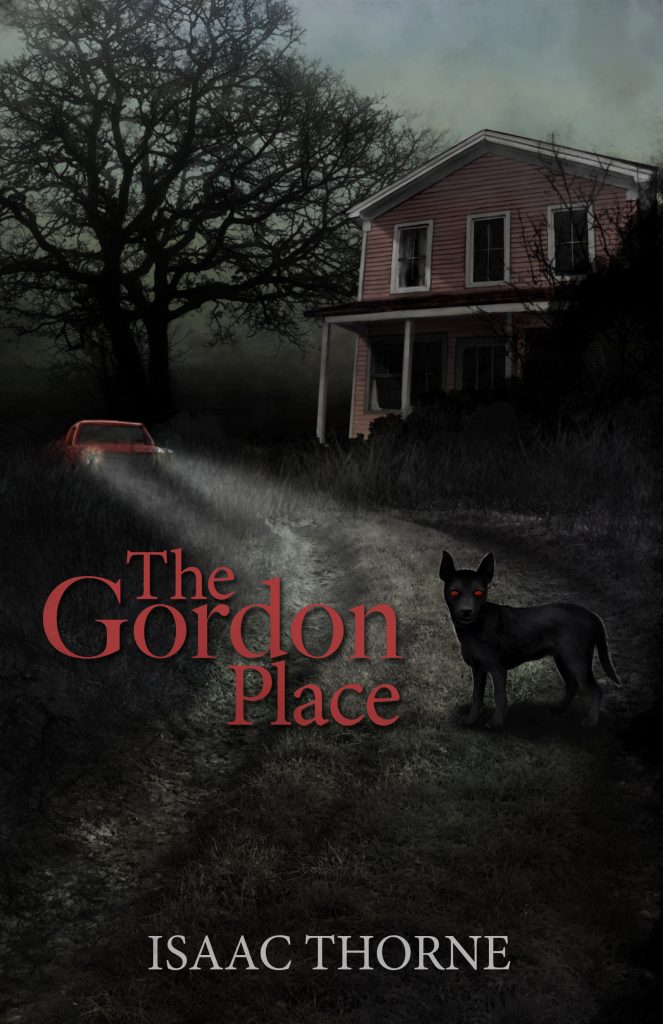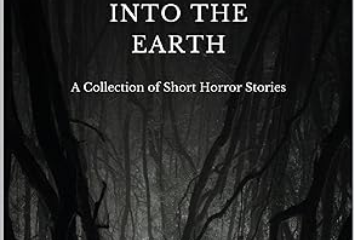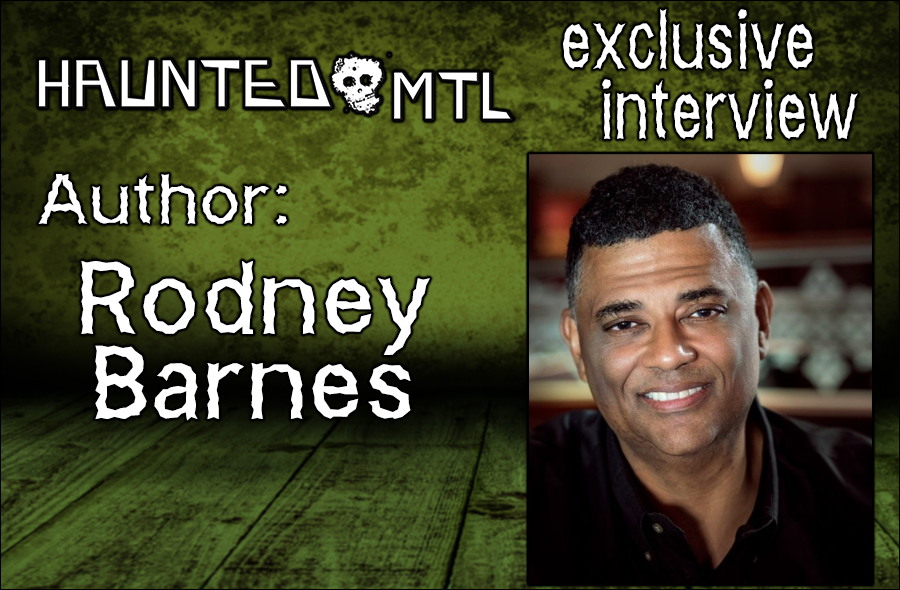
Interview with Isaac Thorne, Horror Author
Haunted MTL interview with Isaac Thorne, author of horror stories such as The Gordon Place, Road Kills, The Murder of Crows, Dislike and Hoppers.
More Videos
Published
5 years agoon
By
Wade WainioAre you interested in discovering horror literature, as opposed to only seeing it on a screen? If so, you’re in luck! I had a chance to play Diane Sawyer and interview horror author Isaac Thorne, author of works like The Gordon Place, Road Kills, The Murder of Crows and Hoppers. Admittedly, I wasn’t familiar with the author until I read his short story, Dislike, to prepare my questions. It’s actually a good story, in case you’re concerned. Anyway, here are the questions and answers!
After reading “Dislike,” I was pleased by the simple approach employed. It also seems like a fairly plausible story, as most of us have seen people carelessly ranting online. Was this at all based on a true experience?
Isaac Thorne: Dislike is unique in my catalog in that it’s a story told entirely through a series of social media posts. It’s not based on a true experience so much as it is an amalgam of experiences you can witness on any social media platform on any given day. The main thing I wanted to depict in that story is the way in which we all vent everything on social media. We shout virtually into these echo chambers thinking that we’re going to find love, support, or sympathy. What often happens instead is that we get yelled at or egged on in an unhealthy way.
What are some themes you plan on exploring in the future, or that you’d like other authors to explore?
Isaac Thorne: Almost all my stories are at least partially informed by current events. Dislike and The Murder of Crows are both more or less about our age of social media and social media justice. Decision Paralysis, on the other hand, is mainly about how damn busy we are with nonsense all the time, to the point of creating crippling anxiety for ourselves. Lately, I’ve been paying a lot of attention to guilt and rationalization, and how people are willing to accept any ridiculous excuse or story a bad guy throws out there as long as they feel like it somehow reinforces their worldview. I’d love to specifically tackle that kind of cognitive dissonance, where people are willingly gaslighted as long as they’re not threatened. But I want to do it in a unique way that doesn’t directly mirror events in the real world.
Visualization
Do you ever visualize stories as if they are movies?
Isaac Thorne: All the time. In fact, that’s primarily the way my head works when I’m writing a scene. Some reviewers of both my short story collection Road Kills and my novel The Gordon Place have said that I have a cinematic style to my writing, so I guess that comes through in the final product to some extent. It’s simpler for me to write a scene if I imagine the way it might play out on-screen, as if I was watching a movie, instead of trying to place myself in whatever the scenario is in my imagination.
What’s the most ridiculous thing you’ve ever written, and did you like it?
Isaac Thorne: That has to be Hoppers, which is a short story about a bunch of demonic rabbits who take revenge on an automotive mechanic who ran over one of them on his way home from work. It’s a story that’s silly on purpose. I wanted to write something that was both horrific and slapstick like Evil Dead II except the possessed entities were bunnies.

Have you ever written yourself into a corner on purpose?
Isaac Thorne: Never intentionally, but it has happened. I wrote the first chapter of my novel The Gordon Place several years ago. That chapter ends with constable Graham Gordon falling into the cellar of his abandoned childhood home and getting trapped there. But it wasn’t until the fall of 2018 that I was able to sit down and take the story anywhere else. After I wrote Chapter Two, the rest started flowing naturally. For a long time, though, I feared that The Gordon Place was never going to be more than that first chapter.
Do you listen to music when writing, or would that just be a distraction?
Isaac Thorne: I used to listen to music. In fact, I incorporated the titles of some of the tunes I was listening to when I wrote Nobody Was Here into the story. That was easy because the whole thing basically takes place in a burger joint’s men’s room. Several of the songs that were in my earbuds in key scenes get a mention in the text of the story. Things are different now, though. It’s been seven years since I completed that first draft of Nobody Was Here, and my life has changed significantly. These days, listening to music or trying to have the TV on as background noise is more likely to distract me from what I’m trying to achieve. I don’t know if it’s because I feel more urgency to write something to completion now that I actually have an audience for my work, or if it’s just because I’ve become more [easily distracted] with age.
Physicality and Planning
In what ways is writing a physical process?
Isaac Thorne: There’s a tactile and auditory sensation to it that I love. I enjoy the feel of tapping the keys on my keyboard in addition to the sound of the clicks. I think the most interesting sensation for me is the relief I feel after I get my words for the day out of my head and into the document. By the time I’m done, my brain is tired, I’m yawning uncontrollably, and all I want to do for the rest of the night is stare at some silly fictional non-fiction on television, like Ghost Adventures or Ancient Aliens.
Do you create a skeletal draft or do you just go in unplanned?
Isaac Thorne: I mostly go in unplanned. The short stories, in particular, are never outlined. The way I start a new project is to form the climactic scene first in my head. I figure out what I want to lead up to, and then I flesh out the rest of the story around that. That way, everything I’m writing to get to that ultimate scene is in the service of answering one question: how did we get here? The aftermath of that ultimate scene then pretty much writes itself.
That said, I admit to having attempted to draft an outline for The Gordon Place after I wrote that first chapter and became worried that I wouldn’t be able to take it anywhere. All I knew when I wrote the first chapter is that I wanted the main character, Gordon Graham, to become trapped in his childhood home and therein be forced to confront the person whom his past had helped shape. Then I got stuck and figured an outline was probably the way to go.
The one benefit of having done so was that it helped me create the other characters in the novel. Everyone except Graham–Afia, Staff, Patsy, Lee–sprang from that outline attempt. Then I started trying to write scenes based on the outline I’d written. I got a third of the way into Chapter Two and realized that even though they’d been spawned from the outline, the characters were taking the story in directions I hadn’t anticipated. At that point, the outline pretty much went out the window.
Do you recommend using a dictionary or thesaurus?
Isaac Thorne: I recommend using both a dictionary and a thesaurus. Don’t use words when you don’t know their meanings. That’s when a dictionary is most handy. They’re also helpful for usage guidelines. A pet peeve of mine is when I see a writer incorrectly use the term “myriad.” You don’t say “a myriad of ways.” The correct usage is “myriad ways.” Many folks want to use “myriad” the same way you use “plethora,” and that’s not correct. However, it might be fine to use it that way someday soon. The way dictionaries seem to work these days is to adopt whatever the most common misusage of a word or phrase might be. That’s why nobody freaks out about the misuse of a word like “literally” anymore.
Are there any stories you’d like to write, but feel you couldn’t?
Isaac Thorne: I don’t think there are stories I want to write that I can’t write if I just sit down and do it. That goes the same for any writer. If you can imagine it, you can write it. Whether the depiction you’ve created of what you were imagining is any good is a different question and one that readers and writers can only answer for themselves.
You may like
1 Comment
Leave a Reply
Cancel reply
Leave a Reply
This site uses Akismet to reduce spam. Learn how your comment data is processed.
Book Reviews
The Hotel: We’ll All Be There Soon.
Published
2 weeks agoon
March 17, 2025By
C M ReidDaisy Johnson’s, The Hotel is a collection of stories that tell the tale of a hotel built on cursed land. Originally written and recorded as a series for BBC Radio 4 in 2020, (you can find the recordings here https://www.bbc.co.uk/programmes/m000mrcg/episodes/player )
The fourteen-story collection was released in hardcover in 2021. Johnson’s prose is haunting, weaving together the stories of generations of families who have been tempted, forced, or serendipitously dumped at The Hotel. Most leave the message, “I’ll be there soon,” and many disappear from room 63.
- ‘The British literary heir to Stephen King’ Johanna Thomas-Corr, Sunday TimesA triumph of contemporary horror from the Booker Prize-shortlisted author, this collection of short stories will haunt you long after you turn the final pageA place of myths, rumours and secrets, The Hotel looms over the dark Fens, tall and grey in its Gothic splendour
- Built on cursed land, a history of violent death suffuses its very foundations –yet it has a magnetism that is impossible to ignore
- On entering The Hotel, different people react in different ways
Last update on 2025-03-17 / Affiliate links / Images from Amazon Product Advertising API
The Plot.
The Hotel tells the stories of the people who are drawn to The Hotel, or, more accurately, the ground the hotel is built on. The first story explains what we know about the hotel, its tendencies, moods, and … hobbies. We are then introduced to Mary Southgraves, ‘The Witch’, who comes to live with her husband on the land on which The Hotel will be built. The villagers in the pond drown her for predicting a sickness that takes the village children, (no this is not a spoiler she tells you she dies on the first page of her chapter.)
The proceeding chapters build upon this story. We meet the workers who are brought in to fill the pond to begin construction. A child of a guest in 1968 who meets another girl who may or may not actually be there. A maid who takes part in séances and Ouija board sessions. The stories progress through time into the present.
Highlights.
The haunting prose of The Hotel does the majority of the heavy lifting for this collection, which makes sense since it began as a podcast series. Johnson’s prose leans towards poetry, albeit more Poe than Keats.
The repetition of specific characters and family names throughout the different stories was intriguing, giving the stories links. These links trigger a sense of recognition for the reader. There is also a sense of anticipation, knowing what has happened to these families already, we wonder how much more they can withstand. The Hotel is like a curse following these families, but I think Johnson is commenting on lineage and the consequences of past actions. The sins of the father and all that.
- Fifteen highly original and darkly unsettling supernatural stories, performed by some of Britain’s finest actresses ‘This is what we know about The Hotel
- It is bigger on the inside than on the outside
- Do not go into Room 63
Last update on 2025-03-17 / Affiliate links / Images from Amazon Product Advertising API
Drawbacks.
These stories can get confusing at times and I think this is due to the briefness of the stories. It’s hard to keep track of a character that you have spent four pages with and remember them three stories later. I found myself having to stop and turn back to check if that person was who I thought they were. This pausing to turn back interrupts the reading experience. It pulls you out of the story and destroys the atmosphere that Johnson has worked to create.
The Final Take.
The Hotel was an interesting read. Johnson is a talented writer who has published a collection of linked stories that will keep the reader turning pages if only to find out the final fate of these families. That being said, it is obvious that the stories were initially written for a podcast. I’m not sure if it’s the way they are put together or… I don’t know, there’s just something ‘podcasty’ about them. As such I would recommend listening to the audio episodes (see the link above) over reading the book.
 (3 / 5)
(3 / 5)
On Halloween in 2016 Josh Malerman, author of Bird Box, released A House At The Bottom Of A Lake (gosh this is a hefty title!). Last week, I picked this slim book up off my library’s Adult Horror shelves, not knowing what to expect. What I got was a novella that should have been shelved in the teen lit section. Perhaps it is the rather weird underwater sex scene that precludes it from those shelves.
- From the New York Times bestselling author of Bird Box and Malorie comes a haunting tale of love and mystery, as the date of a lifetime becomes a maddening exploration of the depths of the heart
- “Malerman expertly conjures a fairy tale nostalgia of first love, and we follow along, all too willingly, ignoring the warning signs even as the fear takes hold
- ”—Lit Reactor The story begins: young lovers, anxious to connect, agree to a first date, thinking outside of the box
Last update on 2025-03-10 / Affiliate links / Images from Amazon Product Advertising API
The Plot.
When James asks Amelia out on a date during summer break, canoeing was the last thing that she expected. Borrowing his uncles canoe, James hopes he can show Amelia an exciting time, because he really likes this girl! The date starts well and the conversation, if stilted at times, is banter-ey and cool.
They head out on the first lake, but James has an idea that they might have a better time on the lake that joins to this one. It is quieter, no speed boats to show him up, they’ll be able to eat their picnic lunch in peace and quiet. When they arrive, though, they notice a tunnel, that may lead to a third lake. Eager to show Amelia that he is an exciting kind of guy, James heads through the tunnel.
Lo and behold, it is another lake! Albeit, a bit murky and deserted, but that’s alright. That is until they notice that beneath the bow of the boat is a tiled roof. Beneath that tiled roof is a whole house. What ensues is a summer of falling in love and exploring a sunken house that may not be as empty as they thought.
Highlights.
Malerman writing the internal monologue of an angsty seventeen-year-old on a first date is one of the most authentic things I’ve read for a long time. Even down to James worrying about revealing that his dad owns the hardware shop he works in. Scared that Amelia will think that is all he is going to do with his life.
The ending (which of course I cannot discuss here) was well done, although a little contrived and predictable. It felt as if it had been almost tacked on the end as an afterthought. Perhaps Malerman finished the story without the final chapter, but was encouraged to add that last bit to give readers some closure
- “A book that demands to be read in a single sitting, and through the cracks between one’s fingers
- There has never been a horror story quite like this
- Josh Malerman truly delivers
Last update on 2025-03-10 / Affiliate links / Images from Amazon Product Advertising API
Drawbacks.
Malerman is a good writer, we have seen this in the many novels he has released since Bird Box. A House At The Bottom Of A Lake did not meet the usual standard. There are many reasons I say this. The first is a lack of creativity in descriptive passages in this book. They all felt pretty drab and began to become repetitive by the end of the story. I don’t know how many, times Malerman compared the way that James and Amelia were moving under the water in their scuba suits as ‘Astronaut-like’ or ‘Astronaut-esque’ or ‘ Like he was walking without gravity’, but really can you find another comparison please because this one is all used up!
As I mentioned in the intro, this did feel like a YA novel. Not only because both of the main characters are seventeen, but the prose is a too simple to be engaging. A House A The Bottom Of A Lake might be marketed differently in Australia (where this humble reviewer lives), perhaps making it to the YA shelves in the US or UK, but this is definitely not adult horror.
The Final Take.
Josh Malerman is a favorite of mine. I tend to pick up his books, blurb unread, because I will generally enjoy what he is putting out there. The exception to this rule is A House At The Bottom Of A Lake (if I never have to type that title again I will be pleased!). It just didn’t hit the way his other novels have and I was disappointed.
 (2 / 5)
(2 / 5)
Imagine this. You’re home alone, waiting for your partner to return, when you hear a knock on your door. You answer it to see a family of five, bundled up against the cold. The father, a kindly older gentleman, explains that he used to live in this house as a boy. And he would love to show it to his family.
Do not let them in.
The story
Released in June 2024, We Used To Live Here is author Marcus Kliewer’s debut novel. It tells the story of Eve, who just purchased a beautiful house with her partner, Charlie. Their plan is to flip the house and sell it.
One night, while waiting for Charlie to come home, Eve is surprised by a knock at the door. It’s a man named Thomas Faust and his family.
Thomas explains that he grew up in the house and hasn’t been in the area in years. Would Eve let them in so that he can show the home to his children?
Against her better judgment, Eve lets them in. She regrets this almost at once when Thomas’s daughter vanishes somewhere into the house.
What worked
I always appreciate a book that allows you to play along with the mystery. And this book does that better than just about any other I’ve seen.
Pay close attention to the chapters, to the words that aren’t there. To everything about this novel.
This is mostly down to Kliewer. This is ultimately his work of art. But the production value is also fantastic. I don’t want to ruin the multiple mysteries, so I’ll just say this. There are clues in this book that require some specific artistic choices in the page layouts in this book. And I loved that.
If you’d like to experience another horror book review, check out this one.
We Used To Live Here is also the kind of story that makes you question everything right along with the main character, Eve. Eve is a great main character. But she might be an unreliable narrator. She might be experiencing every single horror described, exactly as it’s described. Or, she might be having a psychotic breakdown. Through most of the book, we can’t be sure. And that is so much fun.
Finally, the weather plays a large part in this story. There are several stories in which the weather or the land itself could be considered a character. Even an antagonist. This is certainly one. The winter storm is the thing that traps the family in the house with Eve. It also makes escaping the home difficult. Reading this book during the winter was especially impactful. Most of us know what it feels like to be shut in by a storm. I’ve personally lived through some of those storms that are just referred to by their year, as though they were impactful enough to claim the whole 365 days for themself. And that was with people I liked. Imagine what it would feel like with strangers. It’s a staggering thought and one that we explore in depth in this book.
- Get Out meets Parasite in this eerily haunting debut and Reddit hit—soon to be a Netflix original movie starring Blake Lively—about two homeowners whose lives are turned upside down when the house’s previous residents unexpectedly visit
- As a young, queer couple who flip houses, Charlie and Eve can’t believe the killer deal they’ve just gotten on an old house in a picturesque neighborhood
- As they’re working in the house one day, there’s a knock on the door
Last update on 2025-03-08 / Affiliate links / Images from Amazon Product Advertising API
In the end, We Used To Live Here is a fantastic book. It’s the sort of story that sneaks into your brain and puts down roots. And if this is just the first book we’re getting from Kliewer, I can’t wait to see what else he comes up with.
 (5 / 5)
(5 / 5)









Pingback: Media Kit - Isaac Thorne